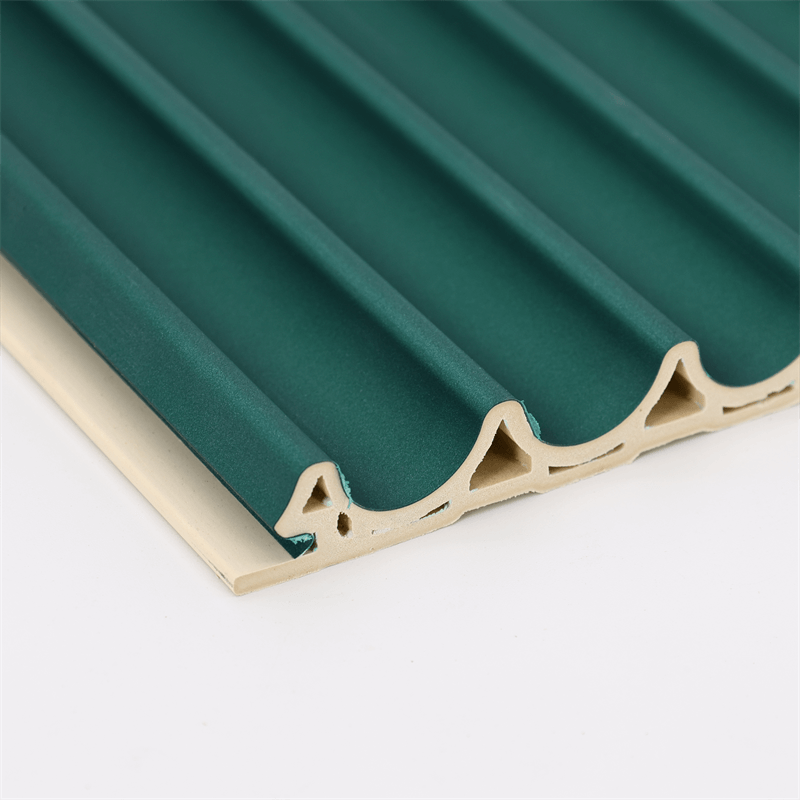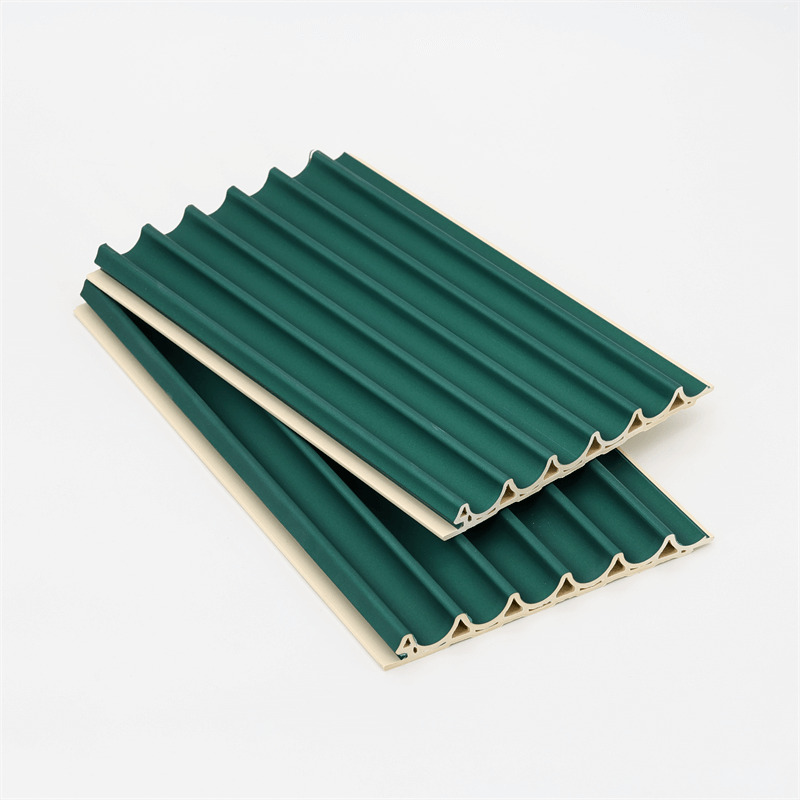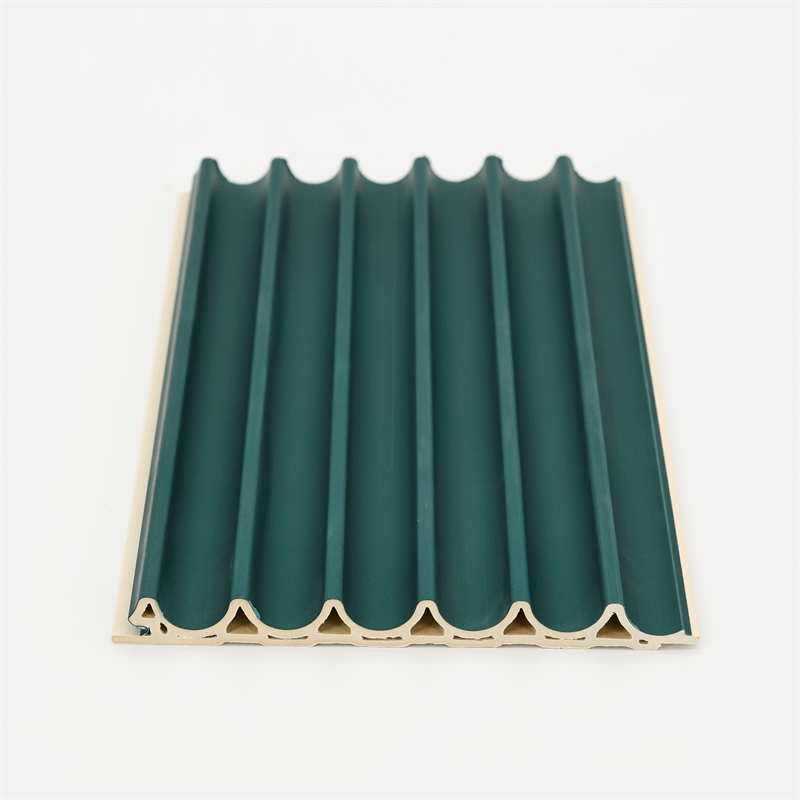In the realm of interior design, aesthetics and functionality are two crucial elements that go hand in hand.
Designing spaces that are visually appealing while serving a practical purpose is a constant pursuit for architects, designers, and homeowners.
Wood-Plastic Composite (WPC) wall panels offer a versatile and innovative solution that enhances both the aesthetics and functionality of interior spaces.
This essay delves into the world of WPC wall panel designs, exploring their ability to transform spaces, their versatility in various design styles, the range of finishes and textures available, and their integration with functional features.
I.Transforming Spaces: The Power of WPC Wall Panel Designs
WPC wall panel designs have the remarkable ability to completely transform the look and feel of a space.
With their wide array of design options, these panels offer endless possibilities for creating unique and captivating interior environments.
Whether the aim is to evoke a rustic charm, a modern elegance, or a sleek contemporary aesthetic, WPC wall panels can be customized to meet diverse design preferences.
These panels can be applied to entire walls, accent walls, or even used as decorative elements to add visual interest and depth to a space.
The versatility of WPC panels allows designers to experiment with various patterns, shapes, and configurations, enabling them to create statement walls that become focal points within a room.
By carefully selecting and arranging the panels, designers can achieve specific visual effects, such as creating an illusion of height, adding dimension, or establishing a sense of rhythm and flow.
II.Versatility in Design Styles: From Traditional to Contemporary
One of the remarkable qualities of WPC wall panel designs is their adaptability to different design styles.
Whether the aim is to achieve a traditional, transitional, or contemporary look, WPC panels can seamlessly integrate with various design aesthetics.
For instance, in traditional or rustic interiors, WPC panels with wood-grain finishes can evoke the warmth and charm of natural wood while offering the added benefits of durability and low maintenance.
On the other hand, in contemporary or minimalist spaces, sleek and smooth WPC panels in solid colors can create a clean and modern backdrop.
These panels provide a versatile canvas for other design elements, such as furniture, lighting fixtures, and artwork, to take center stage.
The ability of WPC wall panels to adapt to different design styles allows designers and homeowners to create cohesive and harmonious interiors that reflect their unique vision and preferences.
III. Finishes and Textures: Adding Depth and Visual Interest
WPC wall panels offer a wide range of finishes and textures that further enhance their aesthetic appeal.
From matte to glossy, from smooth to textured, these panels provide designers with an extensive palette to play with and create visual interest within a space.
The choice of finish and texture can significantly impact the overall ambiance and character of a room.
For instance, a matte finish on WPC panels creates a subtle and understated elegance, ideal for spaces that require a more relaxed and cozy atmosphere.
Conversely, a glossy finish adds a touch of sophistication and glamour, making it suitable for spaces that aim to create a sense of luxury or formality.
Additionally, textured WPC panels can mimic the look and feel of natural materials, such as stone or brick, adding depth and tactile interest to a room.
IV. Integration with Functional Features: Combining Beauty and Practicality
In addition to enhancing aesthetics, WPC wall panel designs can seamlessly integrate with functional features within a space.
These panels can be used to conceal utility components, such as electrical wiring or plumbing fixtures, while maintaining a visually cohesive design.
By incorporating functional elements, such as hidden storage compartments or built-in lighting, into the design of WPC panels, designers can create spaces that are not only beautiful but also highly functional and efficient.
Moreover, WPC wall panels can contribute to the acoustic performance of a room by reducing noise transmission.
Acoustic panels made from WPC materials can be strategically placed to absorb sound, creating a quieter and more comfortable environment.
This integration of functionality into the design of WPC panels showcases their versatility and ability to enhance both the aesthetics and the overall functionality of a space.

WPC wall panel designs offer a powerful combination of enhanced aesthetics and improved functionality in interior design.
Their transformative nature allows designers to create captivating spaces that reflect various design styles, from traditional to contemporary.
The range of finishes and textures available in WPC panels adds depth and visual interest to interiors, while their integration with functional features ensures both beauty and practicality.
The versatility of WPC wall panel designs opens up a world of possibilities for architects, designers, and homeowners alike.
These panels provide a canvas for creativity, enabling the creation of unique and personalized interior environments.
By embracing the potential of WPC wall panels, designers can unlock the full potential of their designs, creating spaces that are visually stunning, functional, and tailored to the needs and preferences of their occupants.
In conclusion, WPC wall panel designs offer a multitude of advantages in the realm of interior design.
By seamlessly combining aesthetics and functionality, these panels have the power to transform spaces into captivating and practical environments.
The versatility of WPC panels allows them to adapt to various design styles, from traditional to contemporary, ensuring a cohesive and harmonious interior.
The range of finishes and textures available in WPC wall panels adds depth and visual interest, elevating the overall aesthetic appeal of a room.
Whether aiming for a warm and rustic ambiance or a sleek and modern look, WPC panels provide designers with the tools to create customized and visually striking interiors.
Moreover, the integration of functional features within WPC wall panel designs showcases their ability to go beyond aesthetics.
Concealing utility components, enhancing acoustic performance, or incorporating hidden storage compartments are just a few examples of how WPC panels can contribute to the overall functionality and efficiency of a space.
As architects, designers, and homeowners continue to seek innovative solutions that enhance both the beauty and practicality of interior spaces, WPC wall panel designs offer a compelling option.
By embracing these versatile and sustainable materials, one can achieve stunning interiors that meet the highest standards of aesthetics, functionality, and environmental consciousness.
In a world where design choices have a profound impact on our well-being and the planet we inhabit, WPC wall panel designs stand as a testament to the possibilities of combining beauty and sustainability.
By harnessing the transformative potential of WPC panels, we can create interior environments that not only inspire and delight but also contribute to a more sustainable and harmonious future.


